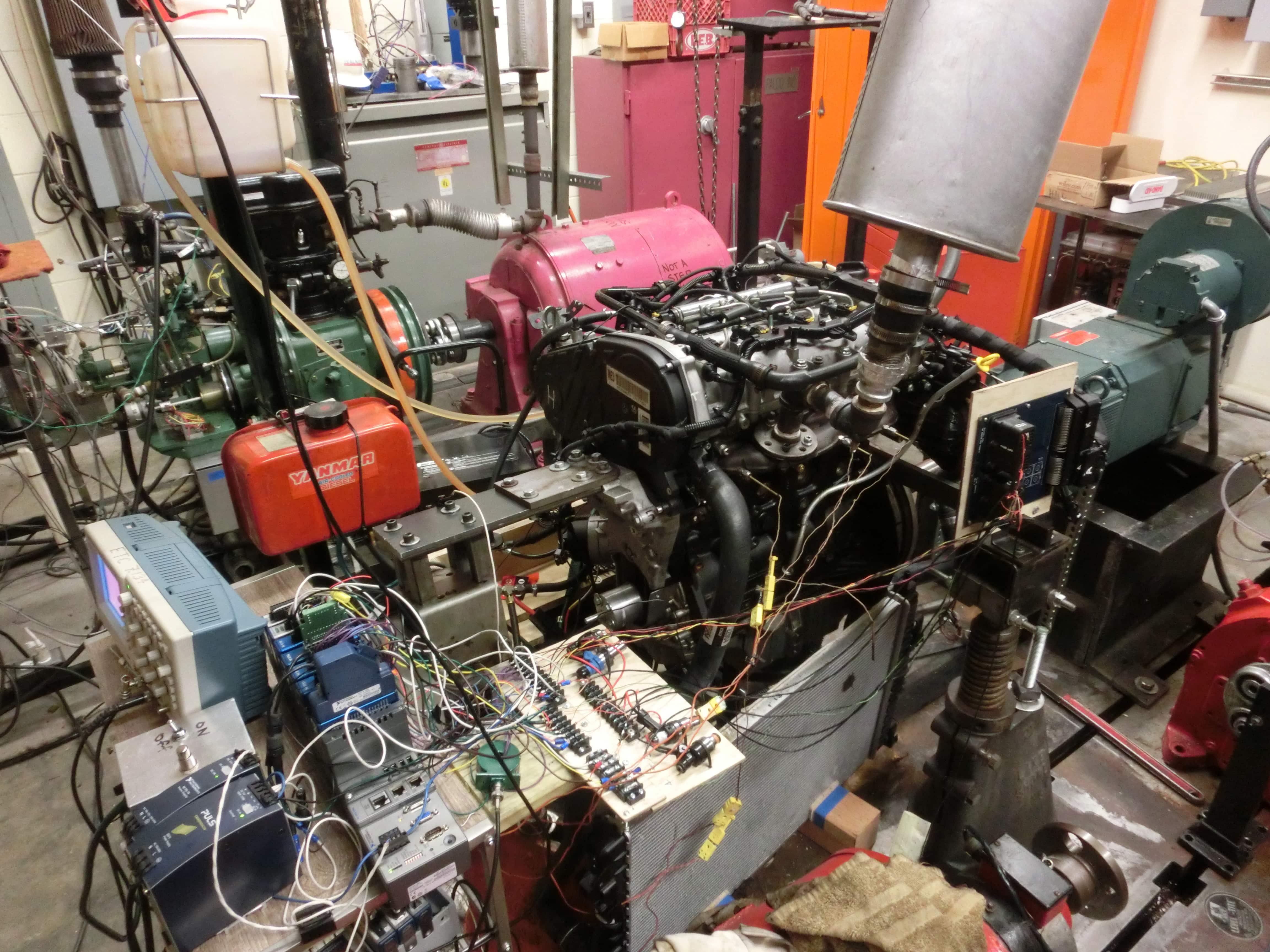
A group of researchers at the Cockrell School of Engineering at The University of Texas at Austin are pursuing a plan to do something a lot of us would like to: incinerate the novel coronavirus.
The researchers plan to use a modified, electric motor-powered diesel engine that can suck up air and essentially burn up SARS-CoV-2 particles that cause COVID-19 through compression heating. If the experiment is successful, it could have major implications for protecting people from the virus in busy places like hospitals and grocery stores.
The team, led by Department of Mechanical Engineering faculty members Chris Rylander, M. Nichole Rylander and Matt Hall, aims to find the right combination of temperature and pressure to deactivate the virus and sterilize the air in large indoor areas.
"We have a way to look at what goes in the engine and what comes out, and hopefully we can incinerate the majority, if not all, of the harmful particles," Chris Rylander said.
The inspiration for the project comes from Chris Rylander's experience with fire pistons, which he regularly demonstrates in his classes during discussions of heat transfer. The device includes a small cylinder combined with a piston that is activated by someone striking it with their hands. The action quickly converts mechanical energy into thermal energy and ignites a piece of tinder to help start a fire.
Chris Rylander had the idea a few years ago that fire pistons, popular among backpackers, could be used to sterilize the air and burn up everything from viruses and bacteria to allergens. A previous experiment found that the devices had some success deactivating E. coli bacteria on surfaces, a bigger challenge than removing airborne particles because surfaces absorb some of the heat.
"That gave us hope that the idea of killing airborne pathogens in a diesel engine should work," Nichole Rylander said.
The team will aerosolize the bacteria used for the tests and have the engine suck them up. The engine in Hall’s lab is outfitted with sensors to measure important variables like temperature and pressure, and it creates the same explosive dynamic as the fire piston. Nichole Rylander's lab will measure whether the bacteria continues to grow to see how effective the engine was.
The team could have data in the next month or so, depending on when they receive funding for this project. Before scaling up the idea, they want to make sure their hypothesis that a heated, high-pressure engine can purify the air and remove coronavirus checks out.
"We really just want to test to see if it works," Chris Rylander said. "We're asking some fundamental questions that I don't think have been investigated before."
The 2-liter engine is similar to one found in a Chevy Cruze, said Hall, whose research focuses on engine combustion processes and energy sensors. It is powered by an electric motor rather than fuel. Hall's engine also includes an exhaust gas sampling system, an engine controller with his team’s customized algorithms and data acquisition equipment for measuring pressure generated by the cylinders.
An engine like Hall's could generate enough power to sterilize the air of a 2,000-square-foot space in about five hours, he said. Using a larger motor could speed up the time to sterilize an area or work on a bigger space.
"It gets hot in there; just motoring the engine you get temperatures on the order of 500 degrees Celsius," Hall said.
It's possible, the researchers say, the experiments won't work without combustion. The next option is to use a clean-burning fuel instead of electric power for the engine. While that would allow them to significantly increase the heat, and odds of killing the virus, introducing fuel byproducts into indoor areas comes with its own set of challenges.







